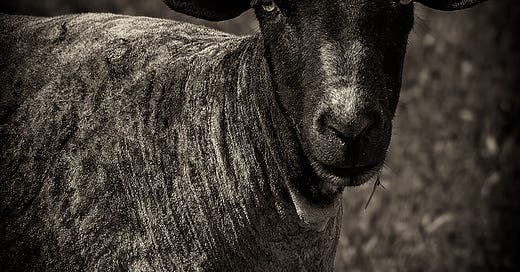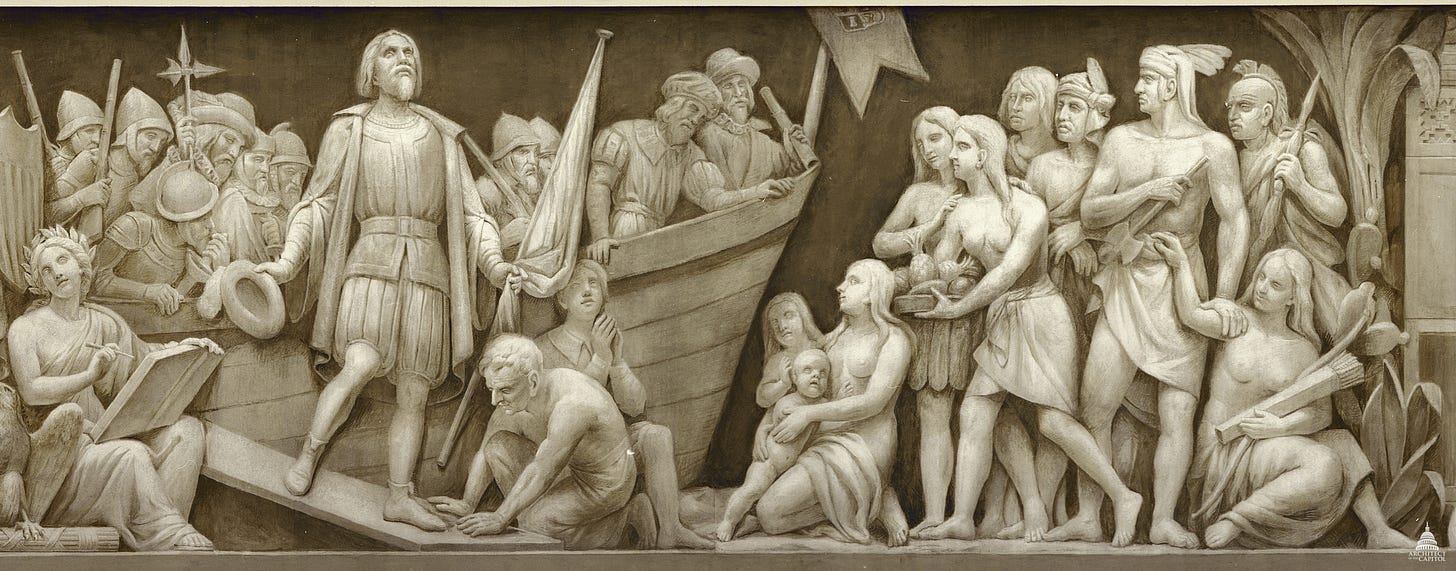Who gets to speak?
On the prevalence of world languages. Plus a shorn sheep and a new tongue twister.
EDITOR’S NOTE: For the foreseeable future, we will publish Wild Things every other week. We don’t have less to say. We just plan to say it more slowly.
PICTURE & WORDS
I’M CREATING a series of portraits of animals, or rather recreating photos from my archive in black and white, which in some cases yields a surprising emotional poignancy and presence. How much is the animal’s true feeling and how much a projection of our own emotions is difficult to parse. –KT
ON LANGUAGE
Forks in the world’s tongues
By Barbara Ramsey
WHICH LANGUAGES are spoken by the largest numbers of people in the world? Stop and think about it for a second. What would you guess?
Here are two lists. The first is the top ten of total speakers and the other is the top ten of native speakers.
Top Ten Languages by Number of Total Speakers
English 1.5 billion
Mandarin 1.1 billion
Hindi 800 million
Spanish 590 million
Arabic 400 million
French 280 million
Bengali 270 million
Portuguese 265 million
Russian 260 million
Urdu 230 million
Top Ten Languages by Number of Native Speakers
Mandarin 940 million
Spanish 490 million
Hindi 380 million
English 370 million
Arabic 360 million
Bengali 240 million
Portuguese 230 million
Russian 150 million
Japanese 125 million
Lahnda 103 million
I don’t find anything surprising in the first list. It’s the last six thousand years of history in a simplistic little nutshell. The high numbers of Mandarin, Hindi, Bengali, and Urdu speakers demonstrate how agriculture can sustain large populations over time, especially in suitable ecological niches such as the river deltas of the Indian subcontinent and eastern Asia. The predominance of English, Spanish, French, Arabic, Portuguese, and Russian speakers illustrates that colonizers armed with weapons, religion, and commerce have a fearful ability to spread their languages.
Now look again at the total native speakers. Two languages have fallen off the first list—French and Urdu. And two new languages have hopped on—Japanese and Lahnda. Japan gave colonialism a serious try in the first half of the twentieth century. But despite its considerable economic power and a large population (currently 150 percent bigger than Germany and 200 percent bigger than France), Japan wasn’t notably successful at invading and holding onto other countries. As a result, nearly all its speakers are native speakers.
The other addition is the mysteriously named Lahnda. The mystery is solved when you learn it’s also called “eastern Punjabi”. Lahnda could be considered a dialect of the larger Punjabi language group, but the linguistic powers-that-be have decided that it’s separate from “western Punjabi”. The division is an artifact of Partition, as Lahnda is the name of the predominant version spoken by Punjabis in Pakistan while Punjabi is the name for the predominant one spoken in India. As a linguist once said, “a language is a dialect with an army.”
Urdu, one of the two languages bounced off the second list, emerged in medieval India when certain Hindi dialects mixed with the Persian spoken by the Mughal court. Due to the multiplicity of mutually unintelligible languages on the subcontinent, Urdu became the Mughal Empire’s de facto “lingua franca”. It remains a common second language in both India and Pakistan and is therefore large enough to show up on our total speakers list but not the native speakers group. It’s a language that no longer has an army.
French, the original “lingua franca” easily makes the first list with 280 million total speakers but, with its merely 80 million native speakers, not the second. Most of their linguistically successful colonies were in Africa, the home of sixty percent of all French-speakers today. Thus, Africans speaking French outnumber French speaking French! Perhaps the vaunted Academie Francaise, the council in charge of all matters pertaining to the French language, should move its headquarters from Paris to Kinshasa.
Why don’t the other colonial languages follow that pattern? As a doctor, here’s my personal and totally self-invented explanation for this anomaly. Africa is the motherland of Homo sapiens, with a history of contact with the Middle East, Europe, and Asia that extends back more than a hundred thousand years. Africans were immunologically well prepared for European colonizers. As a result, French never became a first language in Africa because European germs didn’t kill many Africans, who also kept their native languages. The European languages that made both lists are primarily colonizers of the New World. There, the tongues of the invaders carried both foreign languages and foreign microorganisms. Native Americans weren’t as prepared as African for the invaders’ forked tongues.
VIDEOS OF THE WEEK
HOW TOPICAL! More thoughts on Columbus from Josh Johnson. And a new tongue twister from Elle.








Great article. Really liked your explanation of why French did not gain dominance in Africa, but the colonial languages did in the Americas.
Barbara always adds to my understanding of the world because of her special way of investigating and explaining her ideas.